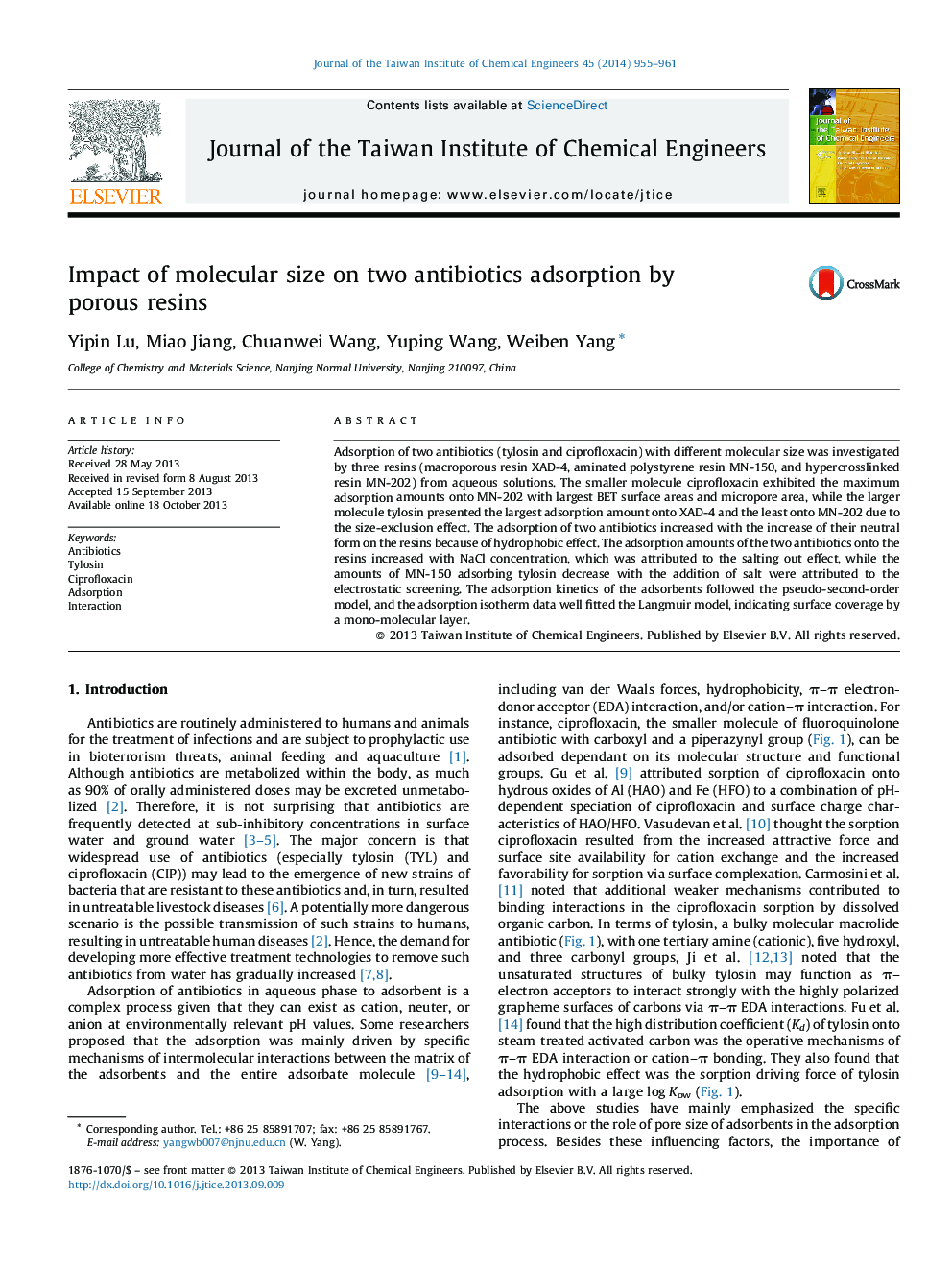| Article ID | Journal | Published Year | Pages | File Type |
|---|---|---|---|---|
| 691263 | Journal of the Taiwan Institute of Chemical Engineers | 2014 | 7 Pages |
•Adsorption of tylosin and ciprofloxacin was together investigated by three types of porous resins.•Obviously a different adsorption was observed due to the molecular size disparity of adsorbates.•Adsorption was mainly controlled by pH values as the neutral form being dominant.•Isotherms demonstrated different adsorption mechanism responsible for antibiotics removal.
Adsorption of two antibiotics (tylosin and ciprofloxacin) with different molecular size was investigated by three resins (macroporous resin XAD-4, aminated polystyrene resin MN-150, and hypercrosslinked resin MN-202) from aqueous solutions. The smaller molecule ciprofloxacin exhibited the maximum adsorption amounts onto MN-202 with largest BET surface areas and micropore area, while the larger molecule tylosin presented the largest adsorption amount onto XAD-4 and the least onto MN-202 due to the size-exclusion effect. The adsorption of two antibiotics increased with the increase of their neutral form on the resins because of hydrophobic effect. The adsorption amounts of the two antibiotics onto the resins increased with NaCl concentration, which was attributed to the salting out effect, while the amounts of MN-150 adsorbing tylosin decrease with the addition of salt were attributed to the electrostatic screening. The adsorption kinetics of the adsorbents followed the pseudo-second-order model, and the adsorption isotherm data well fitted the Langmuir model, indicating surface coverage by a mono-molecular layer.
